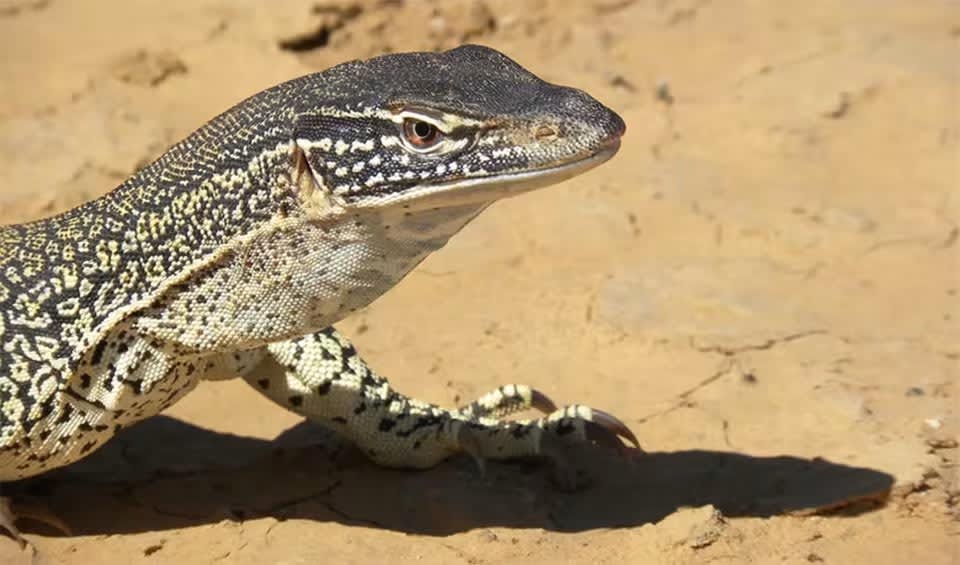A robust and versatile lizard species found across Australia’s arid and semi-arid regions. These lizards are part of the monitor lizard family Varanidae, which is known for its intelligence and physical prowess. The sand goanna can reach lengths of up to 1.6 meters (5.2 feet), making it one of the largest lizards in Australia.
The sand goanna has a powerful build, with strong limbs and long, sharp claws, making it an efficient digger. It is well-adapted to the harsh Australian environment, with a predominantly light-brown to yellow coloration that features dark brown stripes. This striped pattern provides excellent camouflage against the sandy and rocky landscapes and helps dissipate heat.
These monitors are carnivorous and opportunistic predators with a varied diet that includes insects, spiders, scorpions, small mammals, birds, eggs, and other reptiles. Their hunting technique is both active and varied; they will forage and dig to uncover hidden prey, use their speed to chase down animals and employ stealth to ambush unsuspecting victims.
The forked tongue of the sand goanna, which flickers in and out, gathers scent particles from the air and deposits them on the Jacobson’s organ in the mouth, allowing the lizard to taste and smell simultaneously. This highly sensitive chemoreception is critical in locating food and mates and detecting threats.
Sand goannas have a significant place in the cultural heritage of Indigenous Australians, who respect them as an important food source and a feature in their art and storytelling. Every part of the goanna is utilized, with the meat being a traditional source of protein, the fat used for medicinal and practical purposes, and the skin crafted into clothing and ceremonial items.
Distribution
 Australia
AustraliaAnything we've missed?
Help us improve this page by suggesting edits. Glory never dies!
Suggest an editGet to know me
Terrestrial / Aquatic
Altricial / Precocial
Polygamous / Monogamous
Dimorphic / Monomorphic (size)
Active: Diurnal / Nocturnal
Social behavior: Solitary / Pack / Herd
Diet: Carnivore / Herbivore / Omnivore / Piscivorous / Insectivore
Migratory: Yes / No
Domesticated: Yes / No
Dangerous: Yes / No





